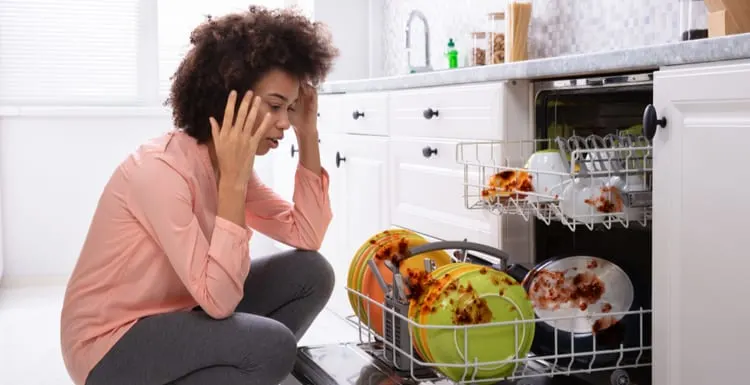If your dishwasher won’t start, it could be due to a few common issues.
Which problem is the culprit?
Find out why your dishwasher wont turn on with our troubleshooting guide.
Disher Won’t Start?
You load your dishes into the dishwasher and press Start but nothing happens. No matter how many times you press the button, the dishwasher wont turn on.
This problem is pretty common. Fortunately, fixing a dishwasher that won’t start isn’t usually difficult. It could be an easy, DIY solution.
If the problem involves replacing hard-to-reach or electrical parts, you’ll need to call an appliance repair company to do it.
The Good News
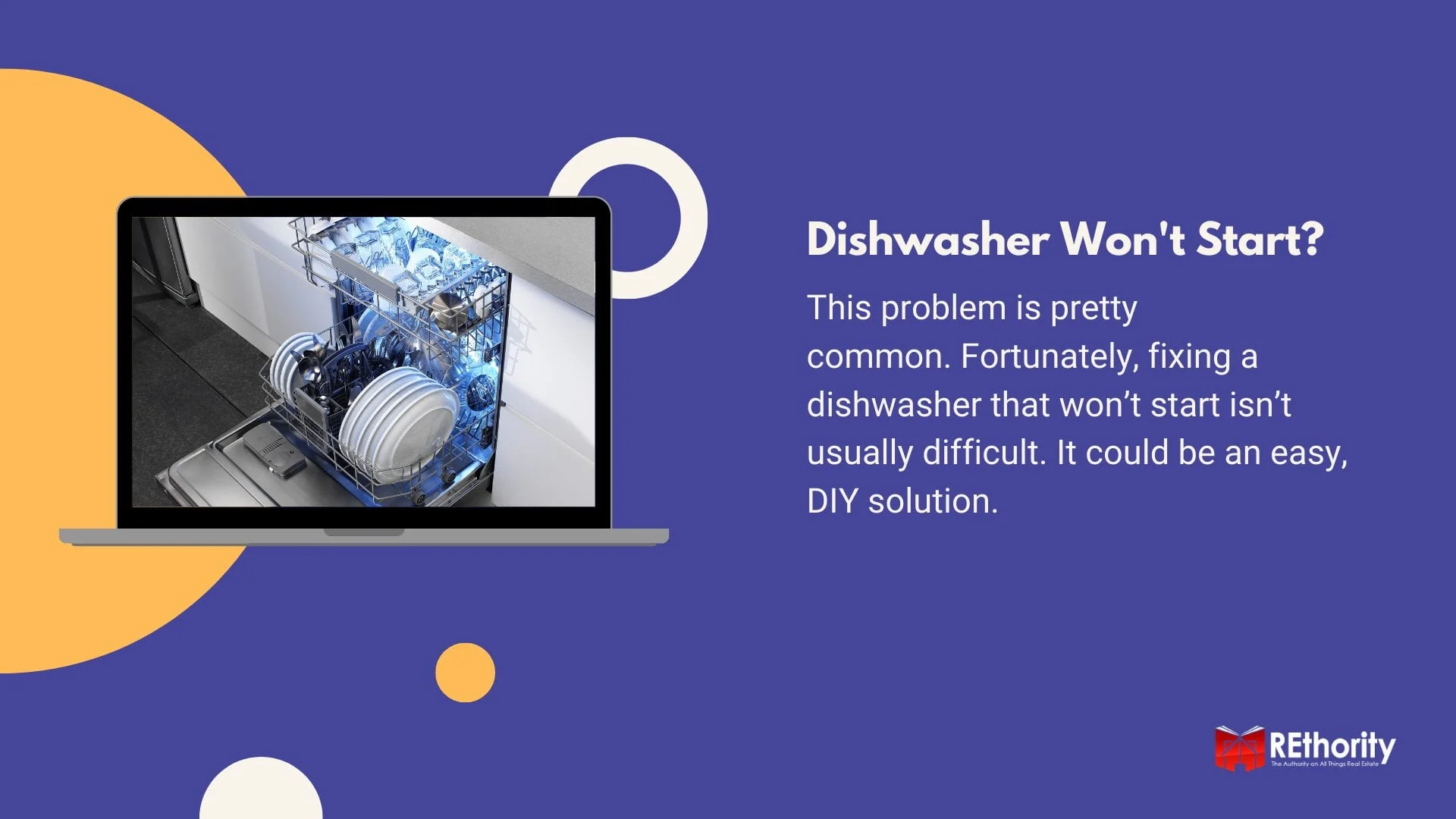
A complete replacement is rarely necessary unless your dishwasher is more than ten years old. Getting your dishwasher fixed is usually inexpensive.
It’s worth it to have this handy kitchen appliance in working order! Dishwashers have many other benefits, too. The intense heat they use kills more germs than hand-washing dishes.
They also use less water, which is a plus for the environment and your wallet. You may be able to get your dishwasher up and running again in minutes.
Read through our troubleshooting guide to find out why your dishwasher won’t start and see what will fix each problem.
Dishwasher Won’t Start: 10 Possible Causes
There are really just ten possible causes when a dishwasher won’t start. Dishwashers are simple to operate, but have lots of small parts inside.
When a dishwasher won’t run, the problem can be mechanical or electrical. With our guide, you don’t have to be an appliance repair expert to determine which problem is the culprit.
Even if the fix is more complex than you can manage, being able to point your appliance repair tech in the right direction will save you time and money.
Please note that this guide is for information purposes only. For safety, always consult a professional if you have a problem with an electrical appliance.
Keep reading to discover the ten possible causes when your dishwasher won’t start. If you don’t want to mess with a DIY fix, use our form to get a free quote from a local appliance repair company.
1. Door Latch

Andrey_Popov/Shutterstock
Your dishwasher uses water, so it won’t start running until the door latch is securely closed. This prevents water from leaking out and causing damage.
It’s a great preventative feature, but sometimes the door latch assembly breaks. When this happens, the machine doesn’t register when the door closes.
No electrical signal is sent when the door latch contacts the door latch switch terminals. It could be due to a broken door latch or a faulty door latch switch. If you have a multimeter, you can troubleshoot this problem yourself.
We’ll be referring to instructions for testing a dishwasher with three terminals: A common (COM) terminal, a normally closed (N.C.) terminal, and a normally open (N.O.) terminal.
IMPORTANT: Unplug the dishwasher or flip the corresponding circuit breaker switch before you begin testing electrical parts.
- Remove the inner door panel at the top of the dishwasher door. Insert the door catch into the latch assembly. Verify that the catch activates the latch switch.
- Carefully remove the wiring harness leads from the latch switch terminals (there may be two or three terminals).
- Use your multimeter to test for continuity by setting it to Rx1. Touch the test leads together and calibrate the multimeter until it reads 0.
- Touch one lead to the COM terminal (it should be marked) and the other to the N.O. terminal without pushing in. You should see a reading of infinity (open circuit).
- Press down on the actuator until you hear a click. You should see a reading of 0 ohms (closed circuit).
- Move the second lead to the N.C. terminal, press, and listen for the click. Look for a reading of 0 ohms.
If you get a different reading, the problem is likely with your door latch or latch switch. They will need to be replaced. Call a professional to ensure you get the correct replacement part and have it installed properly.
2. Control Lock

Maria Sbytova/Shutterstock
A simple issue that can prevent your dishwasher from starting is the child lock or control lock. This feature is designed to keep children from starting the dishwasher without supervision.
If it is activated, the dishwasher won’t respond to the Start button being pressed or touched. Even if you don’t recall turning the child lock on, you could have done it accidentally.
Make sure your control lock is off by following your dishwasher manufacturer’s instructions. Here are general instructions for the most common brands.
Maytag Control Lock
To turn the control lock ON, press the Heated Dry pad for 3 seconds. Look for the indicator light next to the lock symbol to confirm it’s on.
To turn the control lock OFF, press the Heated Dry pad for 5-10 seconds. Look for the indicator light to go off and try to start the machine.
Whirlpool and Kenmore Control Lock
To turn the control lock ON, press the Heated Dry pad for 4-6 seconds. Look for the lock icon to glow. Pressing any part of the pad while it’s on will make the light flash three times.
But the dishwasher will not respond to the selection. To turn the control lock OFF, press the Heated Dry pad for 4-6 seconds. Look for the lock icon to stop glowing and try to start the machine.
GE Control Lock
To turn the control lock ON, press the Heated Dry pad for 3 seconds. Look for the light indicator above the lock pad to turn on.
To turn the control lock OFF, press the Heated Dry pad for 3 seconds. Look for the light indicator to turn off and try to start the machine.
3. Delay Start

Sherbak_photo/Shutterstock
Some dishwasher models have a Delay Start or Delay Hours feature. When it’s activated, this feature allows you to press Start without immediately starting the dishwasher cycle.
Usually, you can set this delay anywhere from 1-12 hours. If you’ve activated this feature purposefully or unintentionally, it could be why the dishwasher won’t start.
Dishwasher brands and models differ, so refer to your instruction manual for exact instructions.
- In general, you’ll see a Delay Start or Air Dry button or selection on the touchpad. If you press it for 3 seconds, an indicator light above the lock symbol will light up.
- To turn this feature off, hold the Delay Start or Air Dry button for 3-5 seconds until the indicator light goes off. You should now be able to start the dishwasher.
- Leak Sensor
Some dishwasher models with an LCD display have a leak sensor or leak detection feature. It lets you know when there is water present under the unit.
It’s designed to sense leaks, but it can also be activated by moisture from other sources. If your dishwasher’s leak detection feature is activated, it will prevent the dishwasher from starting.
If the leak sensor detects moisture, it will show a message on the display similar to “Leak Detected.” Some models will accompany this message with beeping.
In this case, unplug the dishwasher or cut the power from the circuit breaker. Call an appliance repair technician to inspect the problem right away.
Reasons a Leak Sensor May Be Activated
- Leak sensors activate an alert when they sense a leak. The dishwasher will catch the water in a drip pan, but it can only hold so much. It will tilt forward and dump the water out onto the floor so you’ll be aware of the problem right away.
- Too much detergent can activate a leak sensor. If you’ve overfilled your dishwasher with detergent, you may see the leak alert.
- A recently installed or moved dishwasher can cause the leak sensor to activate. It’s easy for moisture to get on the sensor during the installation or move, which the sensor will detect as a leak. Let it dry and try the dishwasher again later.
- Finally, if you’ve recently connected a garbage disposal to your dishwasher, make sure the garbage disposal cap is removed. If it’s not, it will cause the leak sensor to alert you.
Never ignore a leak alert from your dishwasher. There may be a hidden leak that is impossible to see without moving the dishwasher out.
If you see this indicator, don’t assume it’s not a leak just because you don’t see water. You should call an appliance repair technician right away to prevent water damage and electrical risks.
4. Touchpad

Vladslav Lehir/Shutterstock
If your dishwasher has a touchpad, it’s possible that it’s not working properly. The touchpad is the interface you use to control the functions and settings of the dishwasher.
A faulty touchpad results in the dishwasher not “reading” your selections, like pressing Start. You can test the touchpad to see if it may be the problem by trying a few different selections besides Start.
If some or none of the selections get the dishwasher to respond, it’s a good indicator that the touchpad is the culprit. A faulty touchpad will need to be replaced by a professional.
In some cases, you can purchase just the touchpad. Other manufacturers sell the touchpad together with the control panel, which costs a little more. Your appliance repair tech will know which part you need and install it for you.
5. Timer/Electronic Control
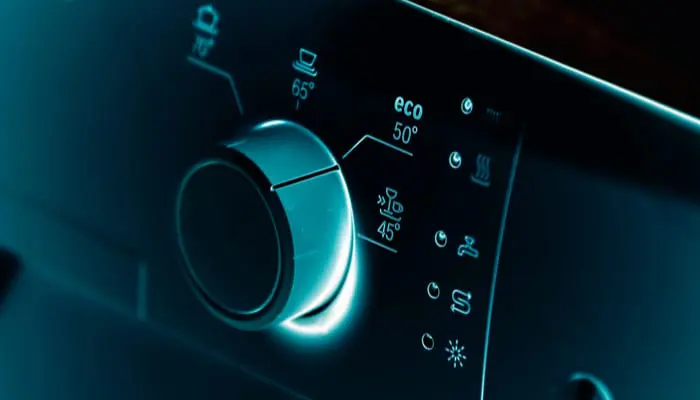
Budimir Jevtic/Shutterstock
All dishwashers have an electrical timer that controls how the dishwasher moves through each wash cycle step. It directs power to all the different dishwasher components for a set time.
If the timer or electronic control is malfunctioning, it won’t supply power to the dishwasher components. This means if you press Start, nothing happens.
Dishwasher timers are complicated parts with lots of wires, contacts, and connectors. Some models even have two timer motors in the timer assembly.
We do not recommend attempting to troubleshoot or fix a malfunctioning timer motor or assembly on your own. Call a professional to inspect your dishwasher and determine if the timer or timer motor is responsible for the failure to start.
6. Selector Switch

Andrey_popov/Shutterstock
Dishwashers rely on the selector switch to respond to different cycle options you select. For example, if you choose heated dry or air dry, the selector switch enables the dishwasher to respond appropriately.
The selector switch is often located in the motor. If it’s not working, it won’t direct the motor to turn on and respond to your selection.
This could be because the selector switch isn’t getting fully depressed inside the motor or because it’s broken. Getting to and testing the selector switch is complex.
- The power must be cut off first. The switch is usually located inside the inner door of the dishwasher on the control panel.
- The inner door must be unscrewed to reveal the control panel at the top of the dishwasher door.
- There could be another panel covering the back of the control panel. This will also need to be unscrewed.
- The selector switch itself will be screwed into the door frame. Then, its many terminals (grouped in pairs, one for each button on your dishwasher) have to be pulled out, and wire harnesses disconnected.
- Next, they all have to be tested with a multimeter for continuity.
This is beyond the scope of most DIY repairs and inspections. Call an appliance repair company if you believe the problem could be your dishwasher’s selector switch.
7. Motor Start Relay

Maikon Lucian Lenz/Shutterstock
Dishwashers rely on a pump motor to remove water from the tub during wash cycles. The main pump motor relies on a motor start relay to give it power until the motor is running.
It works a lot like jumper cables on cars. After the relay starts the pump motor, a plunger inside activates a set of electrical contacts to keep it going.
It won’t need the start relay until the next start-up. If your dishwasher won’t start, the start relay may be bad. While the motor may be in perfect condition, without the “jumpstart” from the start relay, it won’t start up.
The motor start relay is another difficult electrical part to find without knowing about the dishwasher’s components. It requires multimeter testing to troubleshoot.
- First, the dishwasher should be unplugged or turned off at the circuit breaker.
- The lower access panel in the dishwasher should be located and unscrewed to remove.
- The motor start relay, located next to the pump, must be removed.
- The wiring schematics for the appropriate dishwasher model should be followed to ensure the right wires are tested.
- A multimeter will be used (set to Rx1) to test the start relay’s coil (should read 0 ohms).
- The relay must be manually activated. Turning the relay upside down will allow the plunger inside to touch the electrical contacts and manually start.
- The two leads should be touched to the relay’s terminals (should read 0 ohms).
If an appliance repair tech gets a reading other than 0 or nearly zero, they’ll get the correct start relay replacement and install it for you. This should fix the problem and allow your dishwasher to start.
8. Thermal Fuse
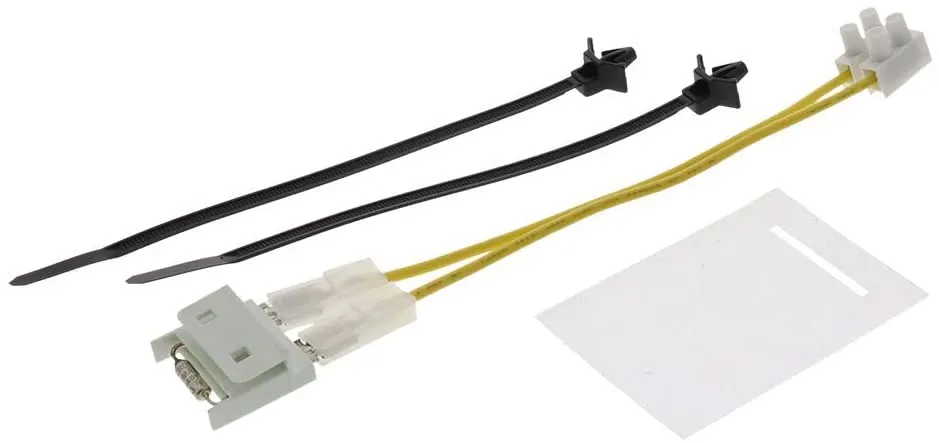
Image Source: Amazon
Fuses operate like individual circuit breakers. They protect electrical panels from being overloaded with electricity. This helps prevent fires, overheated wiring, and appliance damage from happening.
Dishwashers usually have a thermal fuse, which protects the control panel from being damaged due to high heat levels or electrical surges.
Problems can occur when the thermal fuse contacts loosen over time or if there is a short circuit in the wire harness. If the dishwasher’s heating element or pump fails, it could cause the thermal fuse to blow.
If the thermal fuse blows, all power is shut off to the dishwasher controls. This means pressing start won’t have any effect.
It’s an electrical part, so you shouldn’t attempt to fix it yourself. If you’re interested in knowing where it can be found and how a professional can fix it, here’s the overview:
- First, the dishwasher must be unplugged or turned off at the circuit breaker.
- The inner panel should be removed to access the control panel.
- The thermal fuse can be found on the top side of the control panel. Locking tabs will need to be released to free it.
- Two wires attached to the thermal fuse should be carefully removed.
- A multimeter (set to Rx1) will be used to test the fuse contacts. With both leads contacting the probes, the reading should say 0 ohms.
If your appliance repair technician doesn’t get the right reading from the thermal fuse, it’s blown and will need to be replaced. They will get the correct part and replace it for you.
9. Drive Motor
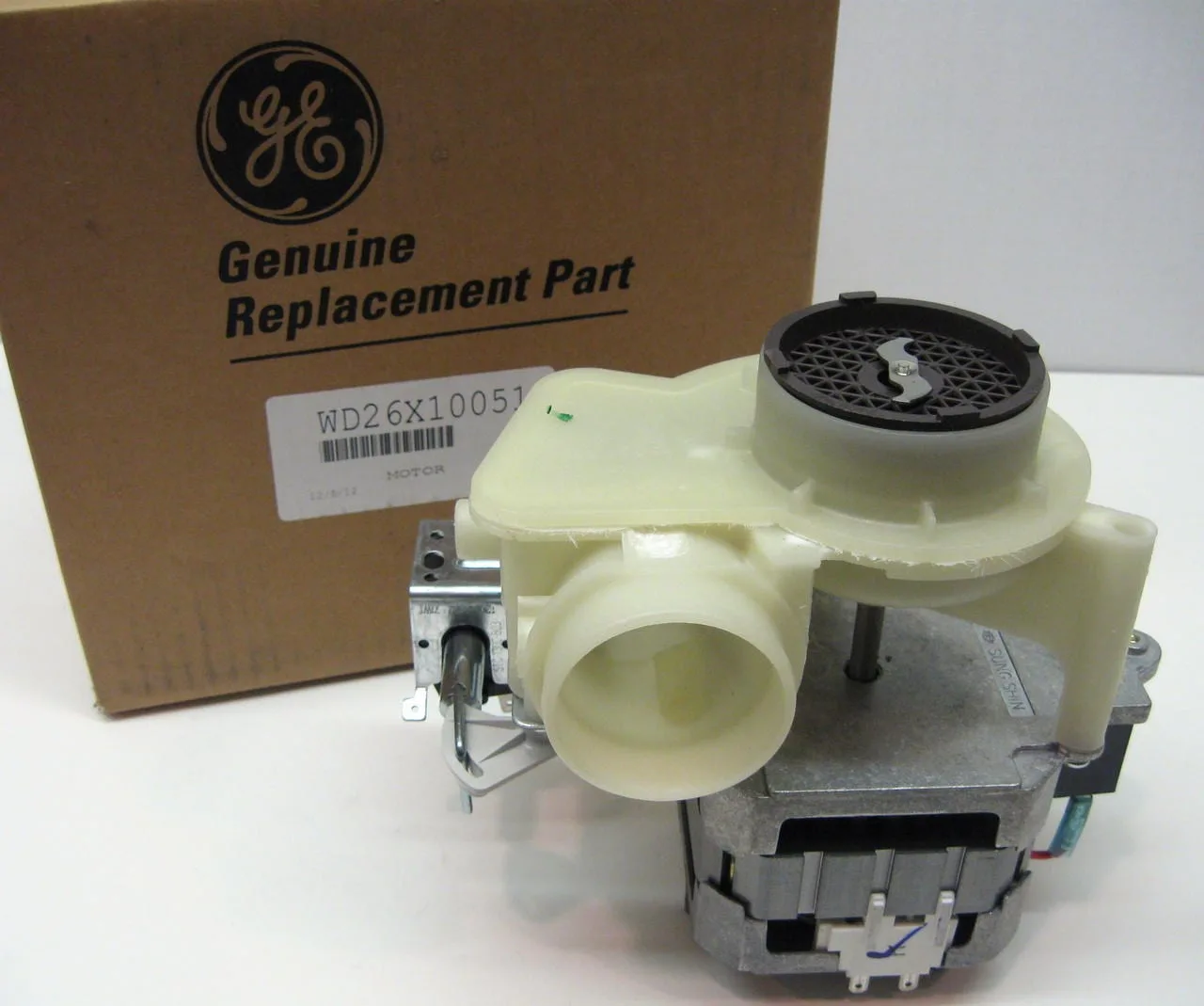
Image Source: Walmart.com
If all else fails, a faulty drive motor could be the culprit when a dishwasher won’t start. The drive motor uses electrical power from the start relay and timer.
It uses this power to move water inside and clean the dishes. A faulty drive motor receives power from the start relay but doesn’t start up.
You might hear a humming sound from the motor if it’s seized up. If you think the drive motor is the problem, go ahead and call an appliance repair company.
They will need to use a multimeter to check the motor’s voltage and resistance to determine if it needs to be repaired or replaced.
- The dishwasher must be disconnected from power completely.
- The lower access panel should be removed to expose the drive motor.
- Wires attached to the drive motor must be carefully removed so the motor can be pulled out.
- A multimeter set to Rx1 can be used to test the motor’s terminals with both leads (should read 0 ohms).
- The ground connection should be tested with one lead on the motor housing (should not give a reading).
Terminal readings outside of zero or nearly zero will prompt your appliance repair tech to recommend a replacement motor.
They will then install it for you and ensure it repairs the dishwasher’s start problem.
Get Help When Your Dishwasher Won’t Start

Andrey_popov/Shutterstock
Unless it’s a simple issue like child lock or delay start settings, when a dishwasher won’t start, you need an appliance repair company to inspect it.
It could be a simple fix that takes just a few minutes, or it could be a complex problem that requires expertise and potentially dangerous electrical components.
Dishwashers are important appliances in modern homes. A dishwasher that won’t start needs to be inspected and repaired.
They’re expensive to replace, so it’s always more affordable to have one repaired. If you don’t have a go-to appliance repair company, use our form above to find one in your area and get a free quote.
Resources:

